PopCulture25YL looks back at the music, shows, comics, books and whatever else we want from the month that was September of 1994 to explore why they’re still relevant to us 25 years later. This week brings us ER, The Marvel Action Hour, Magic School Bus, Generation X #1, the Pulp Fiction Soundtrack, Veruca Salt’s American Thighs, Soul Coughing’s Ruby Vroom, Dave Matthews Band’s Under the Table and Dreaming, Ween’s Chocolate and Cheese, and R.E.M.’s Monster.
VHS In The VCR
Magic School Bus by Hawk Ripjaw
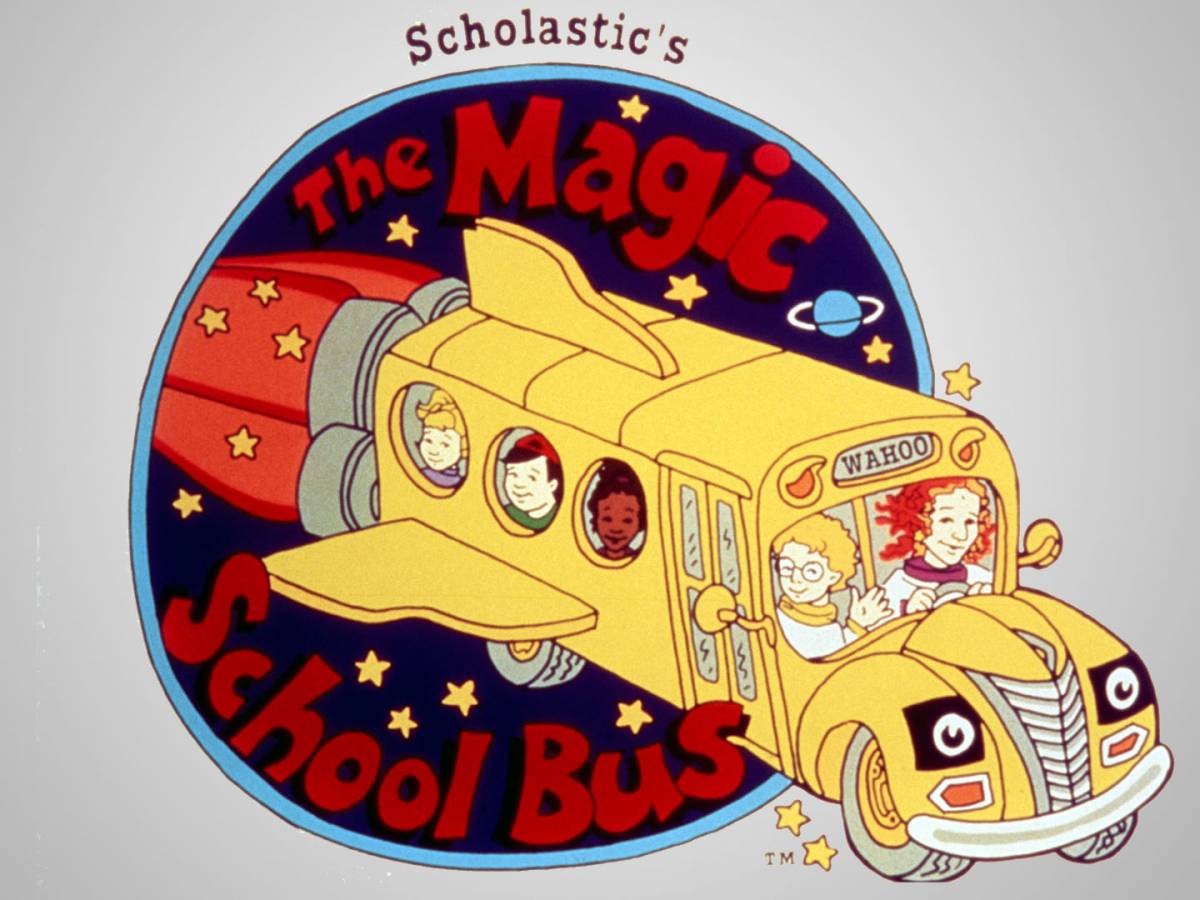
I was all about The Magic School Bus when I was a kid. I absolutely loved it. How cool would it be to go to school, with no idea what was going to happen because your teacher was a wacky genius with a transforming bus with adorable eyes and you were about to go somewhere you’d never dream of going, all in the name of learning some cool scientific concept? And instead of having to open up some dumbass textbook your parents had to quit weekly date nights to be able to afford, you actually get to experience the subject firsthand? The way The Magic School Bus presented scientific subjects was novel and immensely creative.
Two episodes, in particular, stand out in my memory over the rest. The first was “Lost in Space,” the pilot episode of the show. Here, each of the characters establish themselves as their respective archetypes (which honestly works) and the class heads up to space. Eventually, Ms Frizzle disappears, and the class has to save her, learning about planets along the way. The plot invests the audience in caring about the rescue of Ms Frizzle and imparts knowledge of the solar system as a byproduct. It’s really clever educational storytelling and a blueprint for the rest of the series. Also, Arnold vindictively removes his helmet on Pluto, his head instantly freezes, and later he gets a cold. So, you know, don’t try this at home, kids.
The second was “Inside Ralphie” in which Ms Frizzle and the class fly the bus into Ralphie’s cut and drive around inside his body. Eventually, Raphie’s immune system determines that a microscopic bus filled with tiny humans is an abnormal occurrence in the human body and quickly attacks them, imparting a vivid and traumatic lesson to the children on how the immune system works.
One of the things the show did the best was to link scientific concepts to real-world, relatable things. Exploring concepts through the safe confines of a transforming bus is ingenious. By giving the audience character surrogates and taking them literally inside these topics, it made them both easy to understand and very memorable. As a bonus, the show was unusually stacked with both female and minority characters.
The episodes most vividly in my memory were two of the originals (I had a VHS of the first three or so episodes), but subsequent episodes were no less wild: Ralphie gets offended and literally creates a storm. A famous singer calls Arnold “sugar” for a whole episode as a weird way to tell them what her car’s hood ornament is made of. Ms Frizzle comes up with increasingly more bizarre objects for the bus to turn into because sometimes it can just literally transform. Wanda builds a model airplane, and Ms. Frizzle shrinks everyone down to fly in it and they all almost die. They go back in time and Arnold grows giant and has a Kaiju battle with a T-Rex.
But now that I’m older, and existential dread and nihilism have sunk their irrevocable claws into my poisoned adult brain, the idea of a kindergarten teacher and her transforming school bus with fucking eyes becomes significantly more sinister. Gone is the wonder of a whimsical trip into an enlightening and thrilling literal science experience, replaced with the cosmic horror of an omnipotent maniac and her eldritch vessel taking the children on involuntary trips through the nightmares of the human body and modern science. Ms Frizzle doesn’t distribute permission slips for parents to allow their children to fly up somebody’s penis, the kids just show up for school and suddenly get to learn what a urethra is.
One has to wonder what the deal is with this bus. This was the ’90s, back when we could just accept things as they were, especially in a cartoon, but when a show is so wonderfully, memorably focused on real scientific concepts and how stuff works, down to the microscopic level, some questions come up. Where did Ms Frizzle get this bus? How does the bus work? Given how often the damn thing malfunctions, how obscure/illegal/otherworldly are its origins? Most importantly, what are the implications of the Magic School Bus going back to bus size while it’s still inside of a 4th grader’s body?
Yet, I’m still more suspicious of Ms Frizzle. It’s easy to trust her as a kid watching the show, because she always protects the kids, always seems to have the answer and be one step ahead and has such a confident and absolutely fresh-as-hell fashion sense (I always loved the earrings). But sometimes, her laissez-faire approach to educating the kids feels more akin to a parent letting her 4 year old learn what boiling water feels like by not stopping him from sticking his hand in the pot. It’s sometimes hard to not be suspicious about The Frizz, because when someone clearly holds all of the cards, well…they’ve got a reason for it. In one episode, Ms Frizzle is dressed in a cape and speaking in a Transylvanian accent, because she’s a kooky teacher who likes to have fun, but dumb-ass Ralphie thinks she’s a vampire that wants to kill them. The eventual message of the episode is that not all bats are vampire bats. But of course, thinking back, that means that some bats are vampire bats, and Ralphie might have been onto something. She’s been inside him, after all.
Still, I can’t help but still love The Magic School Bus. Re-watching it reminded me of how I learned a lot of really cool, specific scientific concepts by imagining that I was on that bus while an 11-year-old’s immune system tried to murder me. If I have kids, this will be one of the first things I show them. The characters are interesting, the animation is vibrant and memorable, and it’s just so weird and so much fun and absolutely on the wavelength of something I can enjoy as an educational piece.
Obviously, I’ve been most directly impacted by the episodes in which the bus enters someone or someone, mostly because the idea of that is horrifying. I don’t even let strangers into my metaphorical heart, so why would I do it literally?
But now my arms are itchy, and I can feel my blood moving. Could just be seasonal allergies? Or it could be a bus-shaped blood cell scraping the walls.
The Marvel Action Hour by Simon McDermott
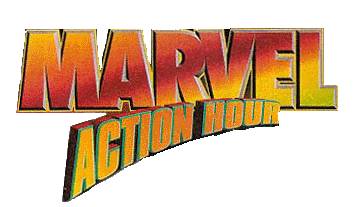 Kids cartoons are rubbish nowadays. I know that’s probably something that every generation says and that nostalgia plays a key role when we look back at those we watched in our early years…but they are rubbish now. I was spoilt for choice when I was a kid. I used to look forward to Saturday morning cartoons and it was a highlight of the week. I could choose from Batman: The Animated Series, Spider-Man, X-Men, Sonic The Hedgehog and many more. My impression of what cartoons are like now are sillier, shallow, overly PC nonsense.
Kids cartoons are rubbish nowadays. I know that’s probably something that every generation says and that nostalgia plays a key role when we look back at those we watched in our early years…but they are rubbish now. I was spoilt for choice when I was a kid. I used to look forward to Saturday morning cartoons and it was a highlight of the week. I could choose from Batman: The Animated Series, Spider-Man, X-Men, Sonic The Hedgehog and many more. My impression of what cartoons are like now are sillier, shallow, overly PC nonsense.
I can substantiate this claim as well. The same material used in those cartoons I was watching back in the early ‘90s are still being used to create major blockbuster films 25 years later.
Batman: The Animated Series is still a fan favourite and laid the blueprint for every animated Batman TV show, film and graphic novel since. It’s also had a major impact on the character and perception of him that translates to the live-action films as well. The X-Men cartoon series is still to this day considered one of the best direct translations from the comics to TV. It’s also one of the main reasons that X-Men was one of the first major comic book movies we got; a franchise that carried on running right up until the current year. The plot of the Oscar-winning Into the Spiderverse is almost exactly the same as one of a run of episodes in the ‘90s Spider-Man cartoon. Finally, for better or worse, we’re even getting a Sonic the Hedgehog movie soon…let’s just hope they can fix that grotesque Sonic design.
I’m saving the best example for last: The Marvel Action Hour. Depending on what country you were in, TMAH was different. In the US, it was the Fantastic Four and Iron Man—yes, that’s right, the one and only—with intros from the man himself, Stan Lee. I was lucky enough to get the UK version, which also included an Incredible Hulk cartoon. We got this whole extra cartoon due to the insane amount of adverts that American TV has. In an hour, we could and still can fit a whole extra episode in comparison. Hulk and FF were both well-known properties at the time and they were great, but the main draw was Iron Man.
Iron Man was not only the best cartoon but was also my first introduction to the character and for a lot of others my age as well. If you could have told me back then that he will be at the forefront of the biggest film franchise in history, it would have blown my infant mind. This is paradoxical in a way because you might except as a kid that something you love could become the subject of a major film, but the way that superheroes were perceived back then was a million miles from the perspective the mainstream has on them now. This is why even the child version of me would have had a really hard time believing it. The public back then would dismiss superheroes as kiddy nonsense in the same way that I’m dismissive of current cartoons; the difference being that I doubt they will be making major films in 25 years out of any cartoon in the current climate. The only superheroes that had managed to break through into the zeitgeist at the time were the two monoliths, Bats and Supes.
The branding of TMAH was spot on. The music themes that linked the cartoons and the imagery used were excellent and built up genuine excitement. I can still recite word for word the intro song for the FF and can remember note for note the instrumental Iron Man intro too. Don’t get me wrong, I know that these cartoons haven’t aged well and are probably virtually unwatchable by today’s standards but they laid the foundations for the Marvel Cinematic Universe. When I heard about the first Iron Man film, his cartoon in TMAH was my first thought and touchstone. It introduced other characters as well such as War Machine, Hawkeye, The Mandarin and Blacklash. I was giddy as a schoolboy when I found out that the villain for Iron Man 2 is based on Blacklash, my favourite villain from the cartoon. I was also equally excited when The Mandarin was set to be the villain in Iron Man 3…although he was used to disastrous effect. Luckily, he will be returning as the character he should have been in the new Shang Chi TV series that has just been announced.
So this ‘90s cartoon made me feel like I was ahead of the curve when the MCU started. There have been various new interpretations of these superhero cartoons and some may have even surpassed the ‘90s versions but those will always be classics. They were all from a golden era because, let’s face it, cartoons before that late ‘80s/early ‘90s period weren’t great. The superhero cartoons from this period were the first to understand their source material and generate a genuine fondness for even a little known hero called Iron Man.
ER- Season 1, Episode 2 “Day One” by John Bernardy
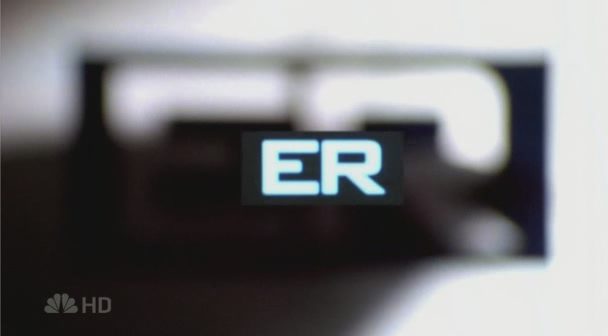
The episode starts with Sherry Stringfield’s Dr. Lewis being woke from sleep in an unused room by a nurse just like Dr. Greene was in the pilot (which I adored so much it became part of our Perfect Pilots series), which made me happy because that told me straight off we were going to learn more about Lewis than just that she was a straight arrow.
What was Lewis woken for? A baby who stopped breathing. The parents were right there watching the ER staff work, and the baby didn’t start breathing again until well after the obstruction—a swallowed earing—was removed. A tense cold open before that theme song kicked in.
The show comes back to Dr Carter (Noah Wyle), who has a number of misadventures played for comedy. He wanted to be there to help with the baby, but they woke him because of a case of mass food poisoning. He gets to do rectals, and the look on his face is priceless. The food poisoning plot actually comes back because an unrelated wedding reception was held at the same banquet hall…it’s essentially the backdrop for all the other plotlines this episode. The ecosystem of how the cases dovetail into all the doctors’ storylines is impressive. I’m not going to do a beat-by-beat to show how it works together, but I have to say ER—written this time by showrunner John Wells—is a master class on plotting.
Two main cases happen over the course of the episode:
- Car crash victims arriving by helicopter on the roof, where one member of a family doesn’t make it, and the snotty 20-something male who hit them is proud for how hard he tied one on until the orderly tells him what he’d caused and why he’s handcuffed to the bed.
- An elderly couple arrives and Mr Franks has to figure out how to say goodbye to Mrs Franks instead of keeping her alive on respirators against her wishes.
Dr Ross (George Clooney) finally gets convinced to see Nurse Carol Hathaway (Julianna Margolies) after her suicide attempt, and finally near the end of the episode he sees her again, however stone-faced she is when they finally speak. He’s beat up about this, and talking to Lewis and Greene about it in the beginning of the episode is when we get our time stamp for how far away we are from the Pilot—”It’s been eight weeks.”
Dr Greene (Anthony Edwards) spends his time between cases dealing with his personal life. His wife Jennifer shows up on the floor. She’s passed the bar and is excited. They have sex in a bathroom but were interrupted because Mark had his hand on the emergency call button the whole time. So he’s dealing with getting caught by his coworkers, and he’s also shown at home in his backyard right up against the L tracks. Jennifer tries to get him in the mood right there outside, but he knows he needs to rest before his shift. She tells him “you’re never gonna leave, are you?” Their rift is still large.
Benton and Carter have a round of numerous patients they cycle back to. Notable moments:
- Carter has to, on his own—everyone else is literally running away to a larger crisis at the time—decide to shock Mr. Zambono back to life with paddles when the patient was only supposed to have boring old chest pains.
- Benton, at the end of the episode, gets validation for a thrombosis diagnosis that was overturned earlier by a higher ranking doctor who thought Benton was just showing off. But it might be too little too late as that patient came back to the ER due to the blood clot actually happening. Tough to know because that’s where the episode ended, the camera pulling away.
Lewis spends her time between cases trying to get a senile patient only known as Victor admitted into the psych ward but she’s overturned just like Benton. Svetic won’t give her a bed. Neither will the main doctor in the ER. Eventually, Victor makes his way back, naked and confused, and Lewis admits him herself into Svetic’s unit. And right while she and Greene are in the cafeteria, she’s roughly chastised by Svetic. Which wouldn’t be a terrible thing except they’re sharing an after-hours scene in a bedroom together. It looks like Paul from the pilot’s last name is Svetic.
This episode introduces us to the “cases of the week” formula that I’m sure the show will use for the remainder of its fifteen years. After the intense realism of the pilot, this episode flows much more like a “regular” TV show, but it’s still a perfect ballet between the cases and the personal storylines, all done in less than 45 minutes.
At The Comic Shop
Marvel’s Generation X debuts by John Bernardy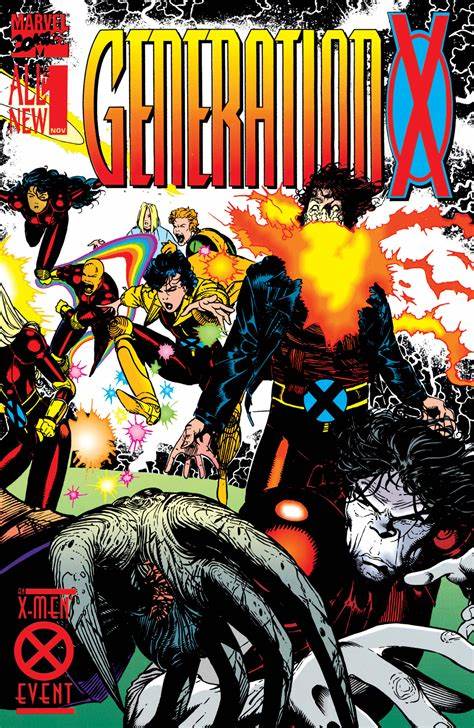
The kids of Generation X were supposed to be the New Mutants for the ‘90s generation, and the book did a good job of making that so. We had a Xavier-sponsored school, with Sean Cassidy (Banshee) & Emma Frost (the White Queen) as headmasters. Sean’s a tried and true X-Man since 1967, and the White Queen was one of the bigger villains the X-Men had faced. How is Emma one of the teachers? She was teaching the Hellions until they died. This is a bit of penance for her as she is slowly turned into a hero and proper X-Men member.
The book deals with curious mysteries over the years (such as what is the deal with the mostly-silent character Penance), and the kids get caught up in crossovers such as Operation: Zero Tolerance, but for the most part Generation X is a book about kids and their feelings as they try to navigate their world from the margins.
And its style was cool as all get out. The design of the characters is my favorite part as this was Chris Bachalo’s welcome-aboard to the X-Books. He and writer Scott Lobdell (at the time filling the Chris Claremont role of primary X-voice) created all the characters, and Chamber is absolute proof of this. A man with an explosion for a head is perfect for Bachalo, who’d began his career on Shade the Changing Man and became my favorite artist ever when he drew Death: The High Cost of Living. I was beyond jazzed to learn Bachalo was coming to the X-books, and I absolutely rushed out to get this first issue.
The story is interesting, and nowhere near as put together or accomplished as Bachalo’s next X-School book Wolverine & The X-Men in 2012, but the book maintained its sense of experimenting throughout Lobdell and Bachalo’s time on the book—they didn’t leave until 1997. We get kids throwing snowballs in the margins beyond the panels when it’s winter. We get one of my favorite covers of all time:
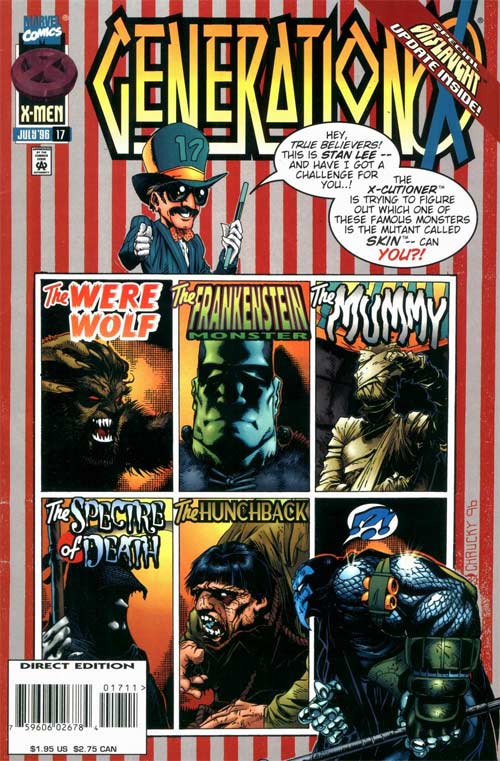
We get a great book where kids find themselves. It may have been a comparatively short run for Lobdell and Bachalo, but I suspect those of you who were there think of this one as fondly as I do. Please let me know if you feel the same way.
CDs on Rotation In Our Six-Disk
Personality Goes a Long Way – Music from the Pulp Fiction soundtrack by Cheryl Lee Latter
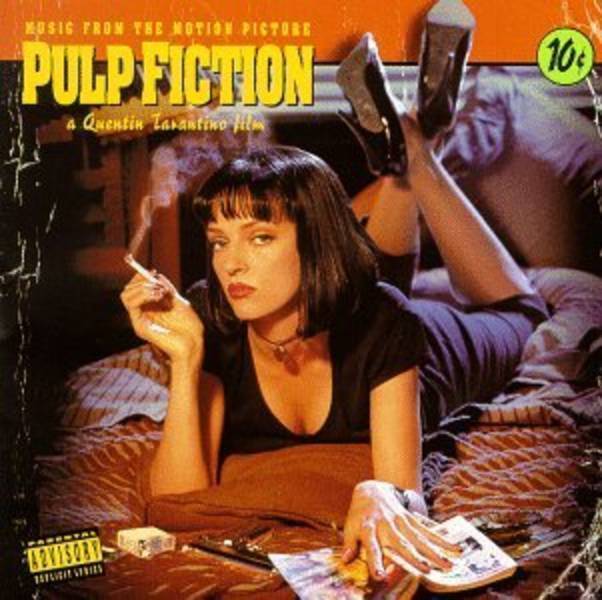
The summer and autumn of 1994 was an exceptional time in film and music. In all things there was a shift towards plastic pop kitsch and DIY culture. Stuffy corporate institutions that in the past had controlled these things through money and greed were overrun by creative, energetic generation X-ers intent on making their own luck.
Grunge and Indie music began to crossover into the mainstream, influencing fashion, advertising and literature.
Quentin Tarantino was the big-screen version of the high school geek turned rock star. Incredibly weird and highly intelligent, the aspiring actor began writing in order to give himself acting work. It kind of worked out far better than he could have dreamed.
Already on the radar through Reservoir Dogs, and the highly successful scripts for Natural Born Killers and True Romance, Tarantino took himself off to Paris for a sojourn, and whilst there filled napkins and scrap paper with the scenes and dialogue that became Pulp Fiction.
The soundtrack to the film is a journey through the story itself. It is a mix of surf rock, ‘60s soul and dialogue from the movie. Like all things Tarantino, it is LA sunshine, US pop culture (and its baffling European equivalents) and the celebration of violence in love. It could well be the soundtrack to Tarantino’s creative mind.
The opening song, “Miserlou,” by Dick Dale and his Del-Tones is the real sound of the film, and has become a theme for ‘90s film in general. The album begins as the film does, with Pumpkin and Honey Bunny’s vow of love:
HONEY BUNNY: I love you, Pumpkin.
PUMPKIN: I love you, Honey Bunny.
PUMPKIN: Everybody be cool this is a robbery!
HONEY BUNNY: Any of you fucking pricks move and I’ll execute every motherfucking last one of you!
And so the story begins.The following tracks are a ride alongside Jules and Vincent as they cruise through their adventures and spiritual journeys.
‘60s soul classics like Al Green’s ‘Let’s Stay Together’ and Dusty Springfield’s “Son of a Preacher Man” are a gentle accompaniment to the violent scenes that intersperse them, a juxtaposition that Tarantino learned through the Coen brothers and honed to his own perfect formula.
“You Never Can Tell” is forever tied to Jack Rabbit Slim’s Twist Contest, and conjures up the iconic image of Uma Thurman and John Travolta boogying together (Danny from Grease can still dance, kids).
“Girl, You’ll be a Woman Soon” by Urge Overkill and Maria McKee’s “If Love Is a Red Dress” slow things down, and are a reminder that all the characters are on a dangerous spiritual and life journey, as are we.
Things liven up for the last few tracks, as the story speeds towards its denouement.
“Surf Rider” is the perfect closer, the sound of coasting into the sunset.
This was the wild mid-’90s, and we were leaving the amniotic comfort of the ‘80s behind and hurtling into the unknown Sci-fi territory of the 21st century. Technology was poised to take over, but for now, driving music was still a thing, and quirky teens blasted this soundtrack to flaunt their cool quota.
25 years later, it is still a shining example of ‘90s energy, and the proof that good writing and good music are timeless.
Veruca Salt- American Thighs by John Bernardy
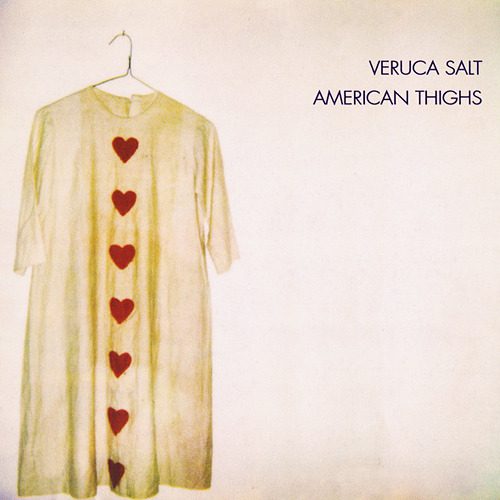
Veruca Salt accompanied Hole on tour before their first album was even released, but if you listen to this you can see why those two bands are a perfect match. The band has hooky songs with absolutely buzzing guitars, though instead of shouting lyrics we get crisp vocals from Louise Post and Nina Gordon that are always in B-52s-tight harmony.
“Get Back” could be on a Liz Phair album with its mellow nature except for the band’s buzz guitars. “All Hail Me” kicks in hard and proves why Veruca Salt is a force, and then “Spiderman ’79” starts on the mellow side and goes full-on shouting refrain by the end. “Seether” will always be the song they’re known for, with good reason, and “Fly shows off a quieter side and the way the band can trance their way through the arrangement of their instruments. “25” is another tranquil song that seems to be a song about where they’ve come from as people, and “Victrola” is another song that can kick you in the teeth.
This album is strong throughout, whether it’s quiet or loud, and it’s even bold with its quiet moments. Start with “Seether”, but don’t expect that’s all you’re going to hear on American Thighs. Veruca Salt’s way more capable than they let on, and I get the impression they like being underestimated.
Soul Coughing- Ruby Vroom by John Bernardy
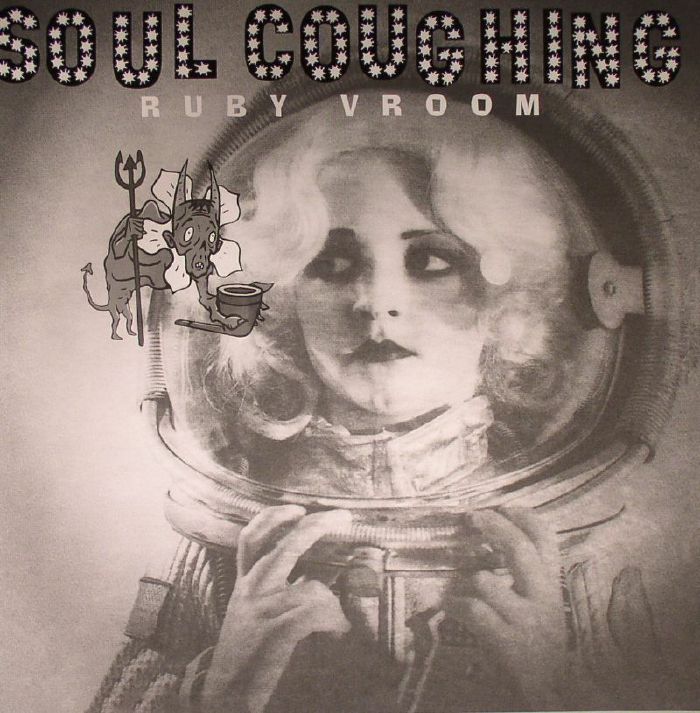
Ruby Vroom proves to be a fully-assembled Soul Coughing. Bouncy beats with sour-on-purpose notes. Moments of mellotron. Strangely delivered nonsense that poses as lyrics. Abstract yet highly funky. Percussion that surely uses Oscar’s garbage can as one of its drum surfaces. This band is beatnik cool and hipster art rock before there was. And I want to be as great as their bass player who gives the impression of being sloppy but he’s on it all.
The only tricky part is Mike Doughty’s words can potentially be off-putting as the album begins. Lines like “the percent nation of Lake Edna” can work great in “Casiotone Nation” but “Is Chicago, Is Not Chicago” starts out with what is supposed to be equally absurd: “A man / drives a plane / into the / Chrysler building.” Back in ‘94, that was laughable. Who the hell would do that?
But other than that, it’s all happy chaos on this album, signified most easily by “Bus to Beelzebub” which contains one of those classic orchestra songs used in Looney Tunes cartoons. If this song suits you, I recommend catching this 25 year-old band where they started. Ruby Vroom could be just your Huckleberry.
Ween- Chocolate and Cheese by Bryan O’Donnall
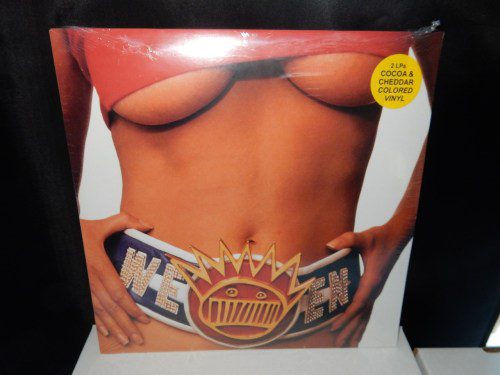
Weird and wacky Ween released their fourth studio album, Chocolate and Cheese, on September 27, 1994. This album strayed far from the punk/alternative/grunge type music that exploded in 1994, but to describe the sound of Chocolate and Cheese in a few terms would be impossible.
Ween often make albums with songs that all completely different. The opener to Chocolate and Cheese, “Take Me Away,” sounds like a ’70s pop song. You can almost see Gene Ween (Aaron Freeman) wearing a tux and snapping his fingers as he thanks the crowd while singing this one. The album takes a bit of a dark, disturbing turn with its next song, “Spinal Meningitis (Got Me Down).” One of the more bizarre Ween songs (and that’s saying something), “Spinal Meningitis” is told from the point of view of a child talking to his mother. Despite the creepiness of this tune, I find it catchy—but maybe not a song you want to be blasting out of your car with the windows down. It might cause some odd looks.
“Freedom of ’76” lightens the mood a bit, with its humorous references to Philadelphia (“Boys II Men still keepin’ up the beat…”) and soulful sound. “A Tear for Eddie” provides probably the exact opposite of what you’d expect for the fifth song on an album released in the peak alternative rock era: a five-minute psychedelic instrumental. But after this song is where Chocolate and Cheese takes off.
“Roses Are Free” contains unforgettable lyrical imagery and a head-nodding beat. This tune became an often-covered song by the jam band Phish, which they still play today. Ween makes some weird and goofy songs, to be sure, but they also occasionally create songs that are sad and powerful. “Baby Bitch” falls into this category. (I’d also describe the song “It’s Gonna Be (Alright),” from the band’s 1997 album The Mollusk in this fashion.)
Things immediately return to the absurd with “Mister, Would You Please Help My Pony?” which always makes me chuckle with its “I think it’s his lung” line. The groovy “Voodoo Lady” picks up the pace, in one of the album’s more rocking songs. The momentum of Chocolate and Cheese slows a bit toward the end, but the penultimate song, “What Deaner Was Talkin’ About” is one of my favorite Ween songs, a simple but melodic treat that helps wrap an iconic album.
Dave Matthews Band- Under the Table and Dreaming by John Bernardy
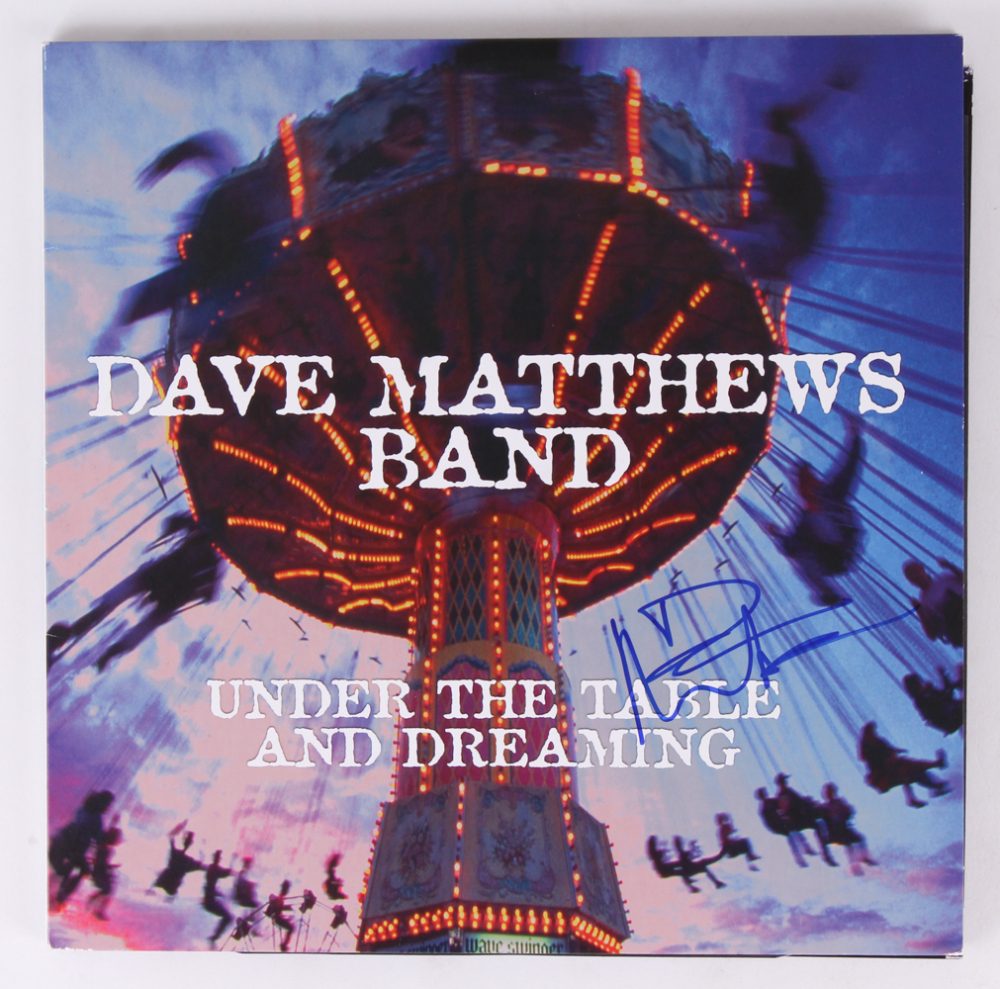
I give this album a bad rap all the time. I adore Before These Crowded Streets, but I feel this album and Crash are in the overplayed category for me. That’s what happens when an album’s omnipresent. It’s like a guy I remember speaking to when this album was new. He was done with “Bridge Over Troubled Water” and “Stairway to Heaven.” He knows they’re great songs, but he heard them so many times. That’s how I feel about Dave Matthews Band. When I put this on the sign-up list in Slack, I even wrote “(please don’t make me write about) Dave Matthews Band.” Yet here I am, because I guess I’m not the only one who feels this way. And it turns out it’s a good thing.
Before this band essentially filled the touring role of the Grateful Dead, we had their first albums on the radio all the time. “What Would You Say” and “Ants Marching” especially. Not bad songs. I still half-smile when Dave says “don’t bite the mailman.” But I’ve heard it so much. Luckily, I was pleasantly surprised by how other songs haven’t been played to death after all.
“Typical Situation” sums up the side of this album that’s quieter and more existential. Much of the album is about coexisting, getting along, and reaching out beyond yourself. I figured it’d be lovey dovey stuff, but it’s more about what is self and how does it fit into reality. And it’s not just the Twin Peaks Season 3 themes stuck in my head making me think that. The words are actually pretty similar in a lot of ways.
While there’s some songs more pop-friendly, a lot of this album comes from the point of view of wanting to understand existence. PopCulture25YL has been an excellent vehicle for me to reassess things, and this album is a perfect example of this. I was not planning on having more than a surface experience with Under the Table and Dreaming, but I’m glad I was able to get under the hood this time around.
How R.E.M’s Monster became a Monster of a different sort by Christopher Holt
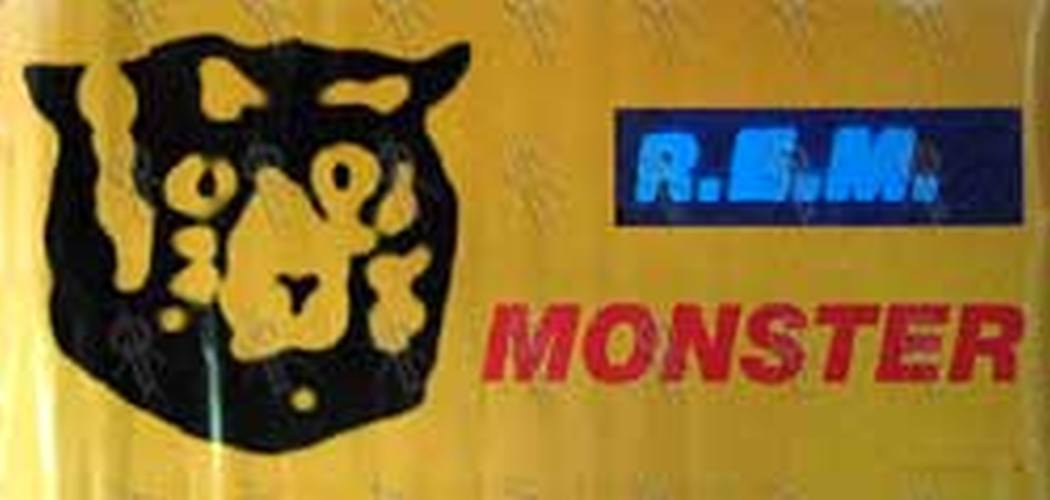
It’s difficult to really articulate how popularity worked before the proliferation of the internet. There was no social media in 1994, there wasn’t really emails and message boards in every home. All we really had were magazines, MTV, the top 40 and good old word of mouth to gage how popular films and music really were at the time. What could not be disputed is that pre-Oasis and Britpop, the most popular band of the day aside from Nirvana was a nice rock band from Athens, Georgia named R.E.M.
Thanks to “Losing My Religion” being a top ten hit and getting endless MTV rotation thanks to its Tarsem Singh (The Fall 2008) directed video, the seventh R.E.M album Out of Time released in 1991 had broken out. “Shiny Happy People” and “Near Wild Heaven” had gone on to be not quite as popular but well-regarded singles. R.E.M were enjoying chart success, radio play and acclaim after ten years being the unsung heroes of rock according to the music press. Deciding not to tour after Out of Time was released, the band instead released a new album a mere a year and six months after the release of their breakthrough.
Automatic for the People came out in September of 1992, and was preceded by the mournful yet haunting single “Drive.” Sales were initially steady but thanks to the follow up singles “Man on the Moon,” “Everybody Hurts” and “The Sidewinder Sleeps Tonite,” soon the album had sold 3.52 million copies. R.E.M were everywhere, you would put on MTV and within ten minutes one of their videos would play. Turn on the radio and “Everybody Hurts” was on. Michael Stipe became something of an outspoken political figure, encouraging kids to get out and vote and their songs retaining much of the political commentary of previous albums Document and Green. Amongst my peer group, Automatic for the People was the album that everybody owned, even suburban dads played it in their car. It would seem that R.E.M had become the new U2 and despite this success, never toured to promote the album. They didn’t really have to.
It was during promotion of the heavily acoustic hit album that the band told reporters that their follow up would see them bring the guitars and amps back out of the closet and getting back to their rock roots. By this point as I was a huge fan of R.E.M’s early work, I couldn’t wait to hear them get back to the political rock of Green.
By late summer 1994 the world was already a different place from 1992. Kurt Cobain was gone, taking a generation’s outlet for their angst with him. The OJ Simpson circus played out on the TV to a bemused world not realising how pivotal a moment in culture and celebrity this would be until much later. R.E.M released the single “What’s the Frequency Kenneth?” from their forthcoming album Monster on an unsuspecting public. We knew new material was coming, maybe it would make sense of this new crazier world we lived in. Later we would discover that the lead single was about generation x and the media’s labeling of them. The intent to make sense of something was there initially at least.
It was clear right from the off that something was different. The first single was all snarling guitars and glam rock fuzz and you couldn’t tell a single lyric that Michael Stipe was saying. His voice was clipped, rapid fire and distorted by the rock. Then the video showed us a different looking band; Mike Mills was wearing some kind of seventies looking jump suit and Michael Stipe had no hair at all now. The song was still a hit—it was the first release in a while by the biggest band in the world—but there was already an air of caution around the new material.
The album came out and started with the lead single well enough. The second track was “Crush With Eyeliner,” a song about obsession, a scuzzy punk rock march that set the tone for the rest of the album. Then comes “King of Comedy” and we find ourselves in experimental mode, Stipe lamenting fame in a heavy breathed monotone. “I Don’t Sleep I Dream” is a more modest track, still with its lyrics reflecting obsession and something of the R.E.M jangly guitar of old, but more scuzzed up with the glam rock tone. “Star 69” is a full-on punk rock blast with the lyrics once again obscured. “Strange Currencies” seems safer as it’s a rockier “Everybody Hurts,” but the lyrics again reflect some kind of obsession with the chorus chiming “You will be mine”. The gentle “Tongue” brought us back on more familiar ground but is still a song apparently about oral sex. The album goes on with three more sleazy glam rockers in “Bang and Blame,” “I Took Your Name” and “Circus Envy.” It takes a break with the howl of grief over Cobain that is “Let Me In,” and then concludes with the otherworldly obsession of “You.” Something became clear following that first listen—none of this was going to be played on the radio.
Monster is ironically an album somewhat out of time. Not at all the grunge rock of the period, not hearkening back to the rocking R.E.M of the pre-Out of Time era, and not really punk which was just coming back thanks to Green Day. It was a glam rock record presented too early for the zeitgeist; Marilyn Manson would be the one to bring that back in 1998. The mainstream crowd who still played Automatic for the People in their car turned away in droves. This was not what they signed up for. It was lyrically darker than their previous work and still had less songs about death even though Stipe had lost close friends in both Kurt Cobain and River Phoenix. R.E.M decided to launch a tour to support Monster and hit the road in early 1995. This was to be their first tour in support of an album since 1988’s Green.
In quick succession drummer Bill Berry suffered an aneurysm and had to undergo surgery and bail for much of the remaining dates. Mike Mills had a benign intestinal tumour removed and Michael Stipe would suffer a hernia thanks to him having to throw his voice so extremely to perform on stage. In interviews on the road, Stipe would start to awkwardly address the questions about his own sexuality (1995 was very different time) and lament the public’s reception to Monster. Having lost much of the public’s affection and with Nirvana now no longer a working band, the record buying kids of the day would move on to Oasis, Blur and the early version of Green Day, ten years before their own breakout with American Idiot.
R.E.M would lose drummer Bill Berry who chose to retire and was subsequently replaced with a series of fill in drummers who never became full members of the band. They would soldier on and release six more albums between 1996 and 2011 as well as a greatest hits package. The mainstream never really came back though. A shame as New Adventures in Hi-Fi released in 1996 is the perfect blend between Monster and Out of Time and really should have been their next record released in 1994 instead, and was a masterpiece that sadly failed to shift copies the way Automatic for the People had. They had something of a brief comeback in 1998 with Up being a critical and commercial success even though it went full experimental again with electronics. The band seemed to always be on the verge of breaking up when promoting further albums, and Stipe often complained of writers block. Come the band’s eventual dissolution in 2011, it was often asked if they would ever reform and the response has always been an emphatic “No.” It has always felt that the reception to Monster was the turning point—people had died close to them and nearly died on the road—yet the record was met with confusion which put considerable strain on the band.
Monster is a good album—when taken on its own terms it’s actually pretty great—but when compared to the rest of the R.E.M catalogue it still ranks around the bottom along with Around the Sun. It was it seems, too bold a step for a band who had taken a long time to cultivate their mainstream acceptance and reach the stars. Typically Monster is the kind of album a band release as their second record and is referred to as a sophomore slump. Some bands recover and some don’t. For R.E.M the album was all a matter of timing and in some ways, changed music just as much as “Losing My Religion” and Automatic for the People, but not necessarily for the right reasons. It remains a curiosity in R.E.M’s discography and perhaps a cautionary tale to any artist currently enjoying adulation by the masses.


